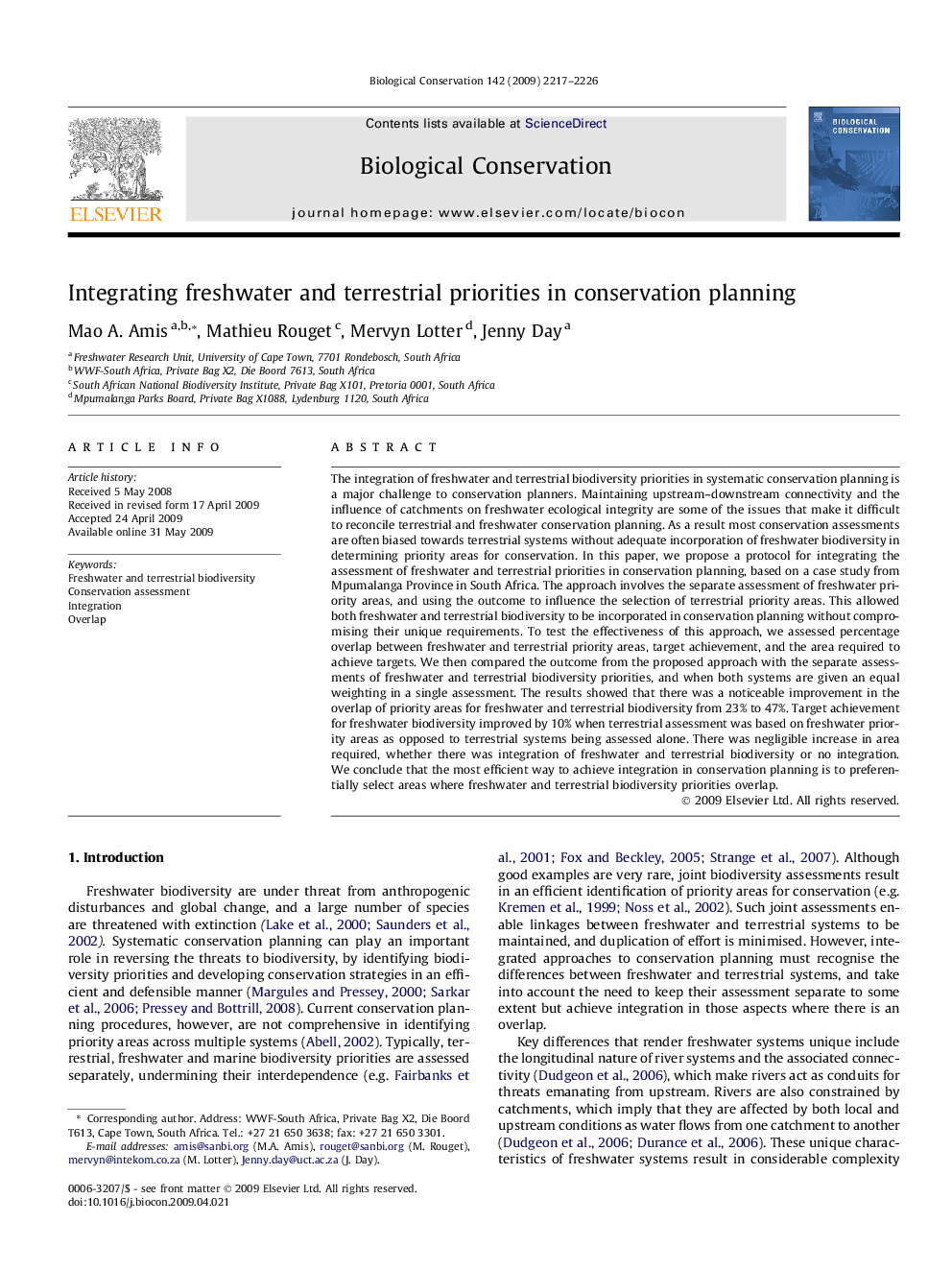| Article ID | Journal | Published Year | Pages | File Type |
|---|---|---|---|---|
| 4386217 | Biological Conservation | 2009 | 10 Pages |
The integration of freshwater and terrestrial biodiversity priorities in systematic conservation planning is a major challenge to conservation planners. Maintaining upstream–downstream connectivity and the influence of catchments on freshwater ecological integrity are some of the issues that make it difficult to reconcile terrestrial and freshwater conservation planning. As a result most conservation assessments are often biased towards terrestrial systems without adequate incorporation of freshwater biodiversity in determining priority areas for conservation. In this paper, we propose a protocol for integrating the assessment of freshwater and terrestrial priorities in conservation planning, based on a case study from Mpumalanga Province in South Africa. The approach involves the separate assessment of freshwater priority areas, and using the outcome to influence the selection of terrestrial priority areas. This allowed both freshwater and terrestrial biodiversity to be incorporated in conservation planning without compromising their unique requirements. To test the effectiveness of this approach, we assessed percentage overlap between freshwater and terrestrial priority areas, target achievement, and the area required to achieve targets. We then compared the outcome from the proposed approach with the separate assessments of freshwater and terrestrial biodiversity priorities, and when both systems are given an equal weighting in a single assessment. The results showed that there was a noticeable improvement in the overlap of priority areas for freshwater and terrestrial biodiversity from 23% to 47%. Target achievement for freshwater biodiversity improved by 10% when terrestrial assessment was based on freshwater priority areas as opposed to terrestrial systems being assessed alone. There was negligible increase in area required, whether there was integration of freshwater and terrestrial biodiversity or no integration. We conclude that the most efficient way to achieve integration in conservation planning is to preferentially select areas where freshwater and terrestrial biodiversity priorities overlap.
